
Interview with ceramic artist Makito Kawai (Hachioji, Tokyo)
Share
We visited ceramic artist Kawai Makito on a clear autumn day when the fire is lit in the anagama kiln at Chokoji Temple once a year.
I asked Mr. Kawai about the process of making pottery.
Please read them and then pick up your favorite one.
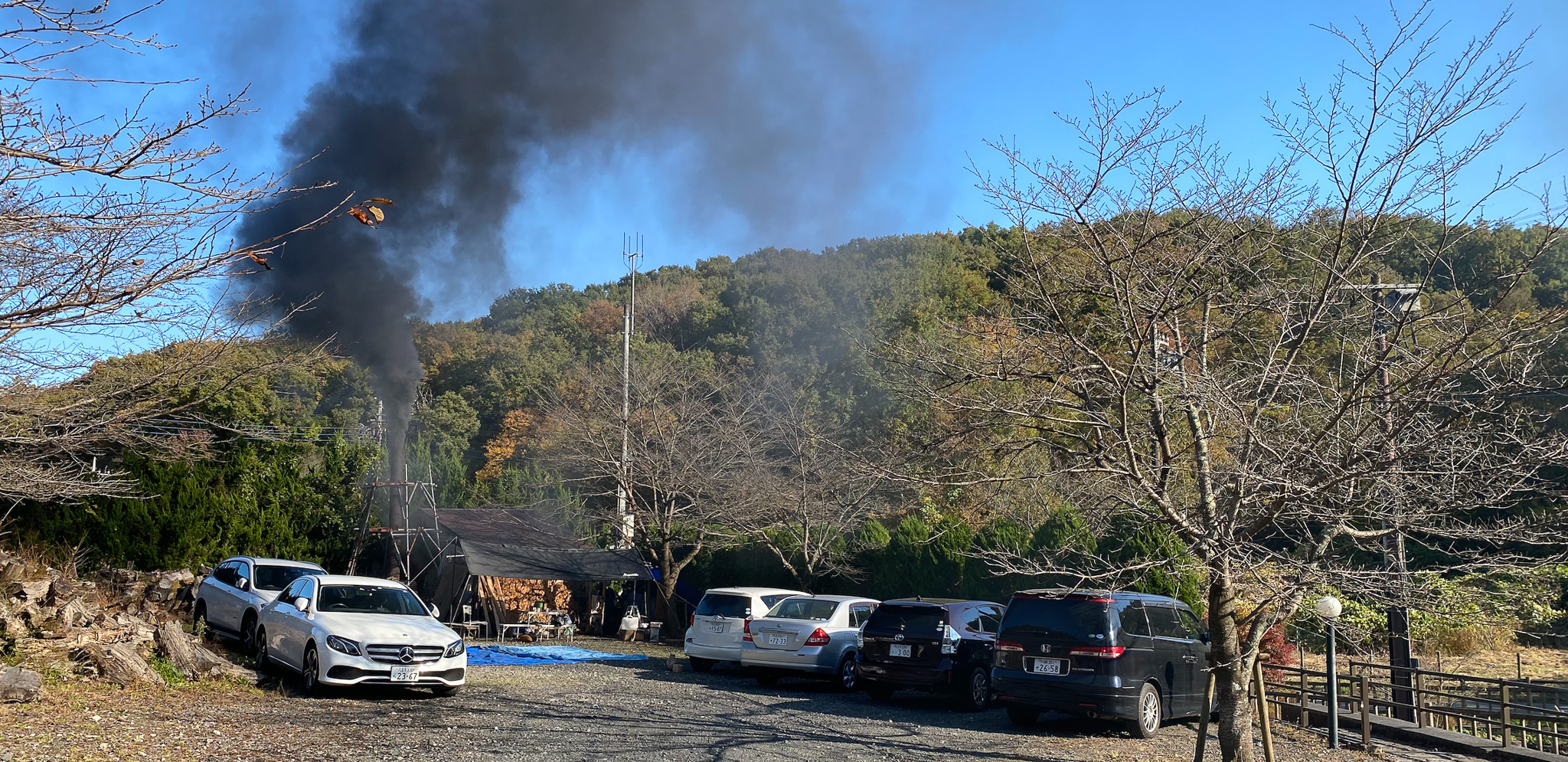
How do you mold it?
Most of my pieces are made on an electric potter's wheel.
After shaping, the flowerpot body is carved and then dried in preparation for bisque firing.
Please tell me how to mold a piece with legs.
After shaping the main body of the flowerpot, take the angle of the body and align it with the template, place it on a clay slab, cut the clay to make three legs, and attach them to the main body. Since the heavy body is supported by three legs, there is a little risk, and sometimes cracks appear when baked.
When sticking pieces of soil together, it is important to check the dryness of the soil, as they need to be at roughly the same level of dryness.
Before bisque firing, the flowerpot body and legs are attached, and then they are completely dried and then bisque fired.
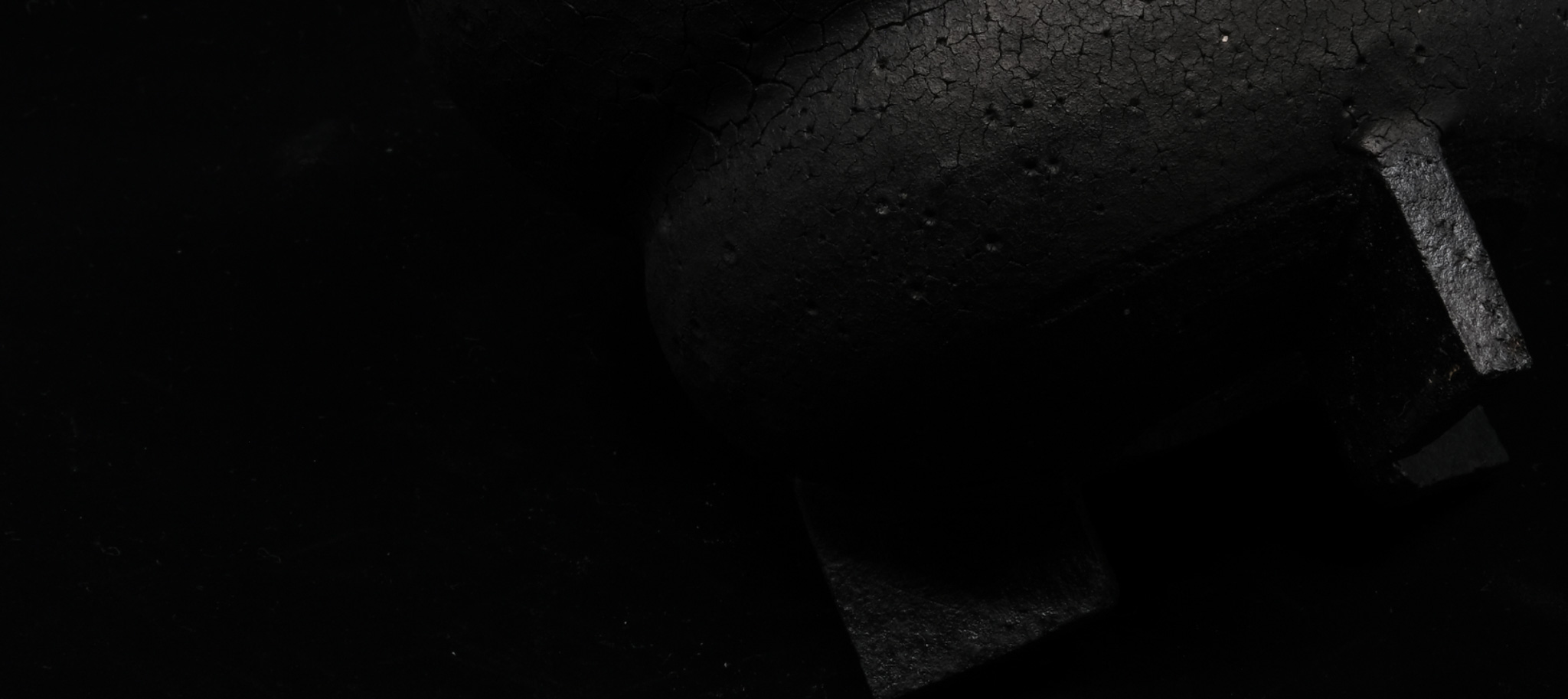
Please tell me about the process from bisque firing to final firing.
Some pieces are made by pouring thick clay containing iron as a base with a ladle (before bisque firing) to create a different appearance when fired, but usually the pieces are bisque fired after molding at about 750℃.
After bisque firing, I pour my original "Hakurekiyu" glaze over the piece with a ladle or a dip, then I fire it. When I take it out, it becomes "pure white" and the shrinkage causes cracks in the piece. The cracks and crazing are caused by the difference in shrinkage. This is one of the characteristics of the piece.
The kiln is fired electrically, and when it reaches about 950℃, propane gas is poured in to create a reducing atmosphere with a lack of oxygen to create the scenery. If it is dyed, the blue will be beautiful, and if it is brown, it will be darker. This is the final firing.
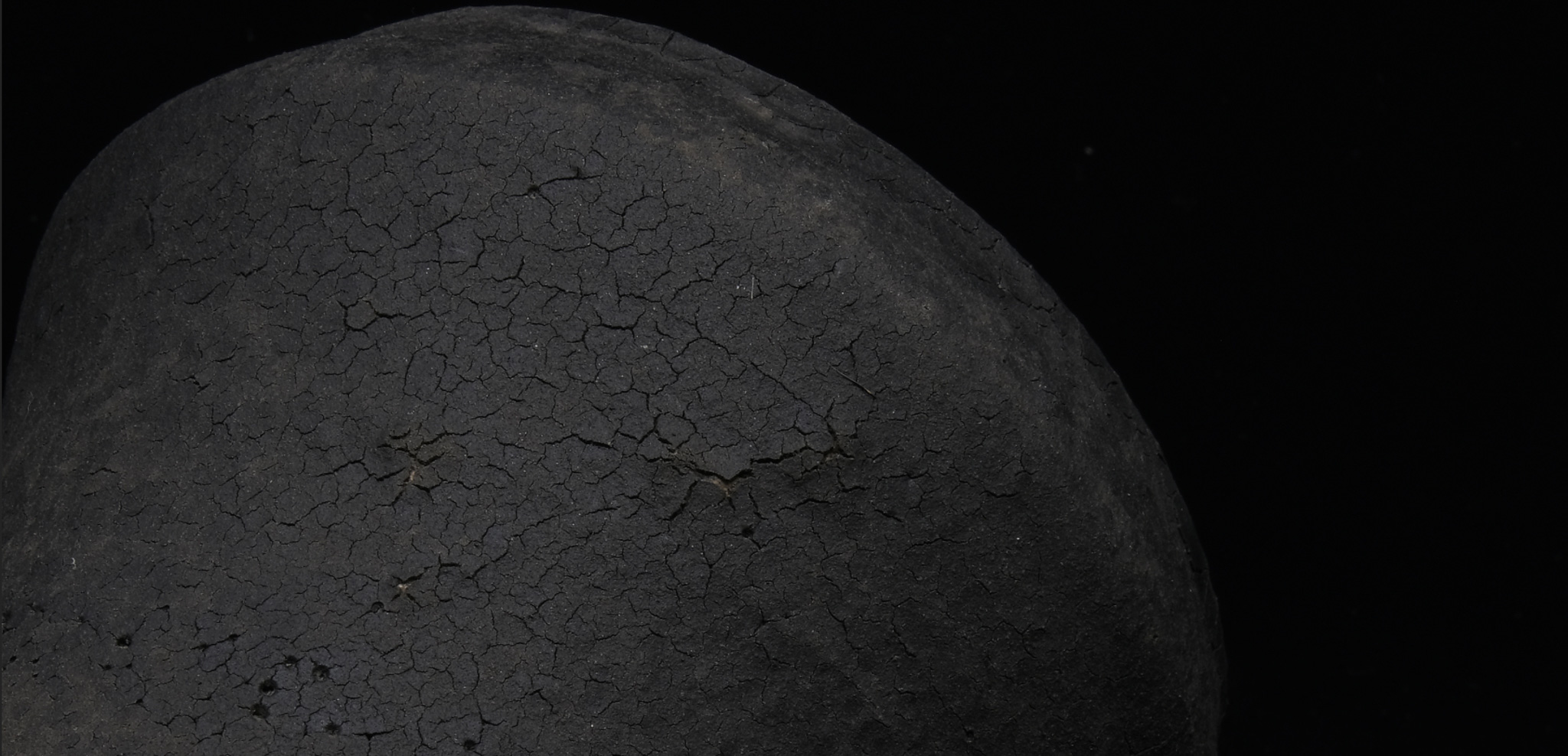
Please tell me about the process of "applying lacquer"
The entire piece is finished in black using natural lacquer.
Unlike urethane lacquer, natural lacquer is very expensive and the techniques used are valuable.
First, lacquer is placed on a tray and the amber-colored lacquer is blackened with pine ash.
I paint the entire piece with a hard brush, and finish it using a technique called "ceramic lacquerware" that is said to have been around since the middle of the Jomon period. I hope you enjoy the texture created by this 4,500-year-old technique in modern pottery.
If you look closely at the piece, you will see that it is lacquered all over, including the legs and foot, which are coated with a water repellent. By lacquering the legs as well, it is gentler on the foot and less likely to scratch the base, as it will not get caught on anything. In addition, lacquer is strong when it dries, so the cracked parts that look like they might fall off at first glance will not peel off.
I mixed natural lacquer with white pigment to adjust the color to a beige color, then wrote my signature at the very end to complete the piece.
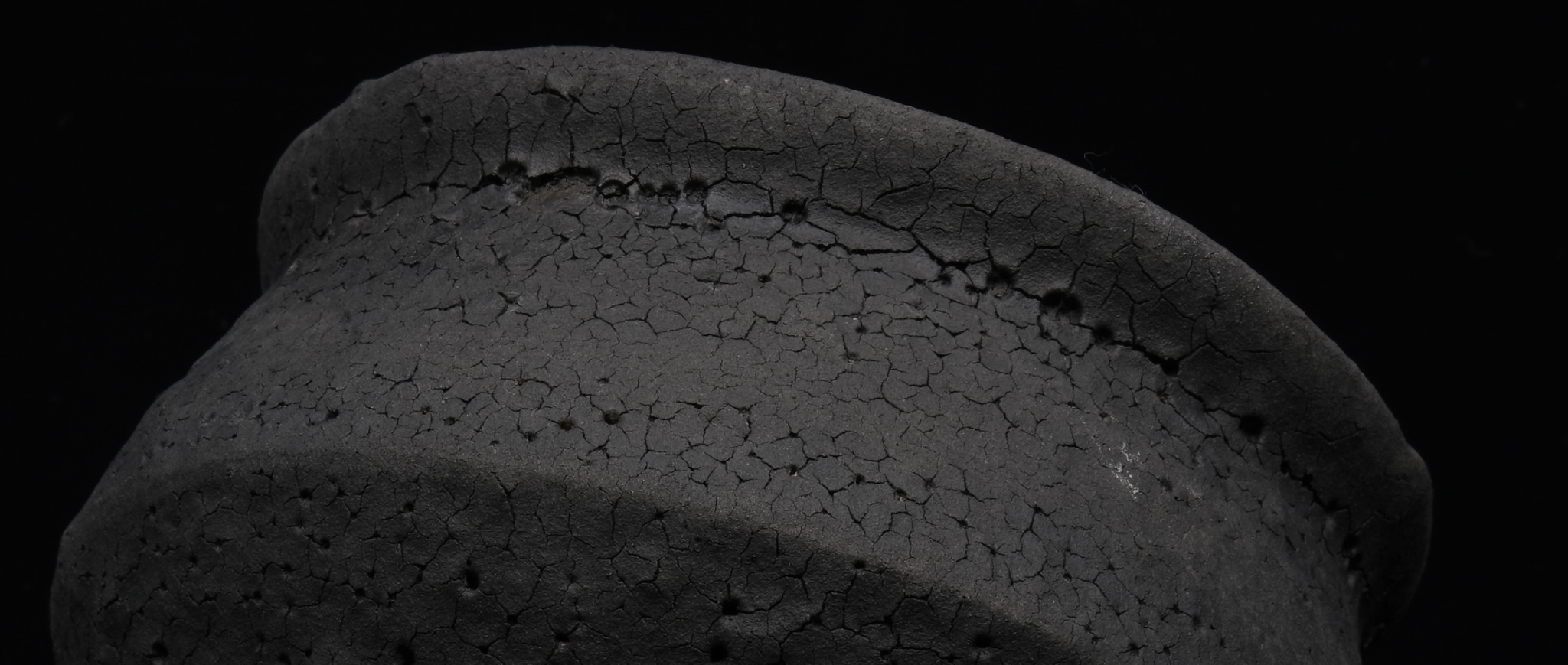
Please tell us a little bit about anagama kiln.
Thanks to the kindness of Chokoji Temple, I was given permission to build an anagama kiln on the premises, and I built it 17 years ago over the course of three months. It's a fairly large anagama kiln, so I fire 200-250 pieces inside once a year. I also fire pieces by other potters, as well as those of my students in my pottery classes.
We use red pine firewood, which is reduced when it reaches 950-1000℃, and then we aim for 1250℃ and continue to burn for 65-70 hours until the large amount of firewood we have prepared is used up. Since I can't do it alone, I get help from many people. After it's burned, we put a lid on it, including the chimney, and take it out after a week to 10 days. Until then, it will be smoked.
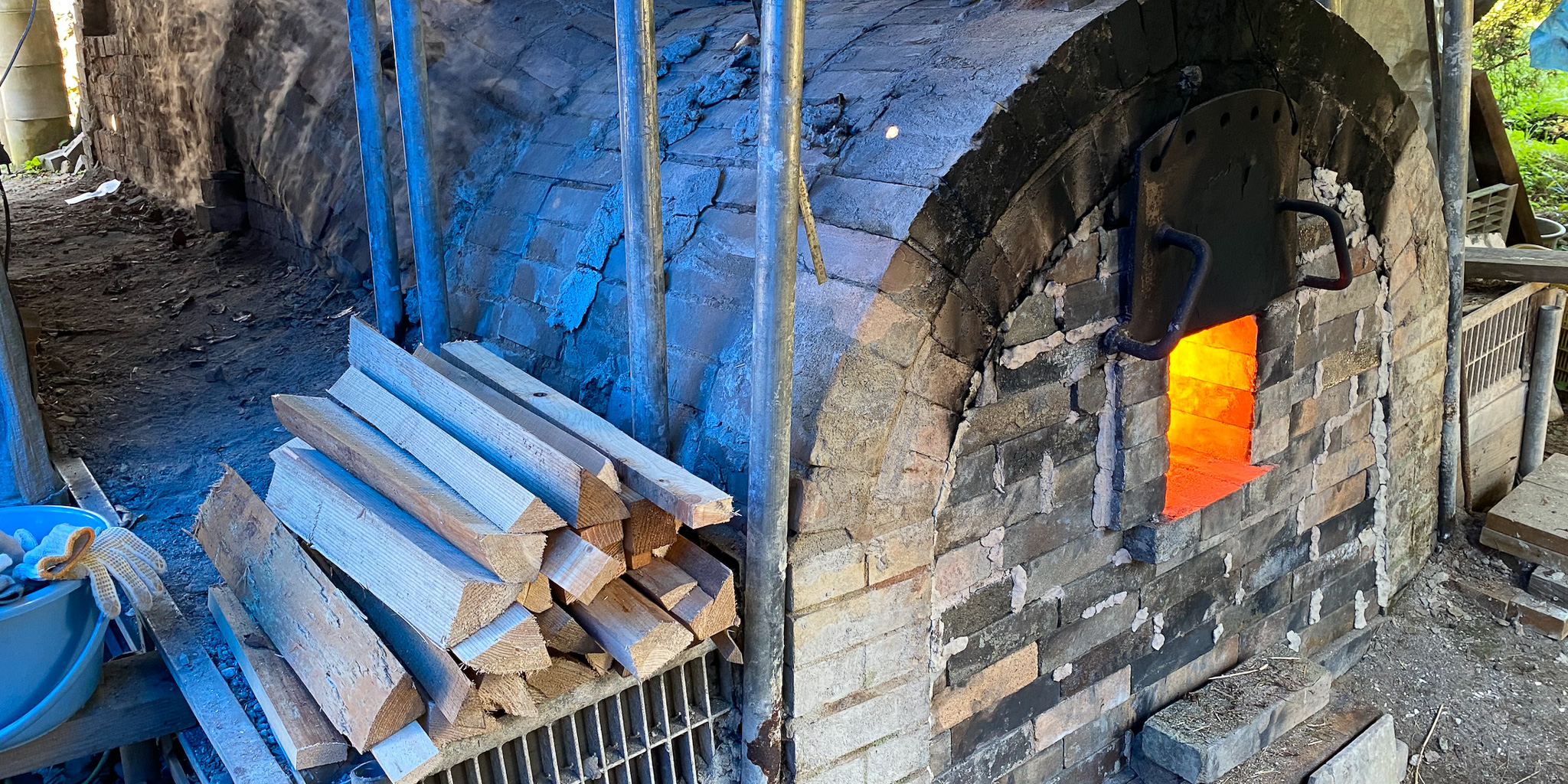
OMBLE : Thank you very much for reading to the end.
Thank you, Kawai-san, for taking the time to talk to us, even though we were only there for the annual firing of the anagama kiln.
I am also very interested in works fired in anagama kilns! Please tell me more about them!
